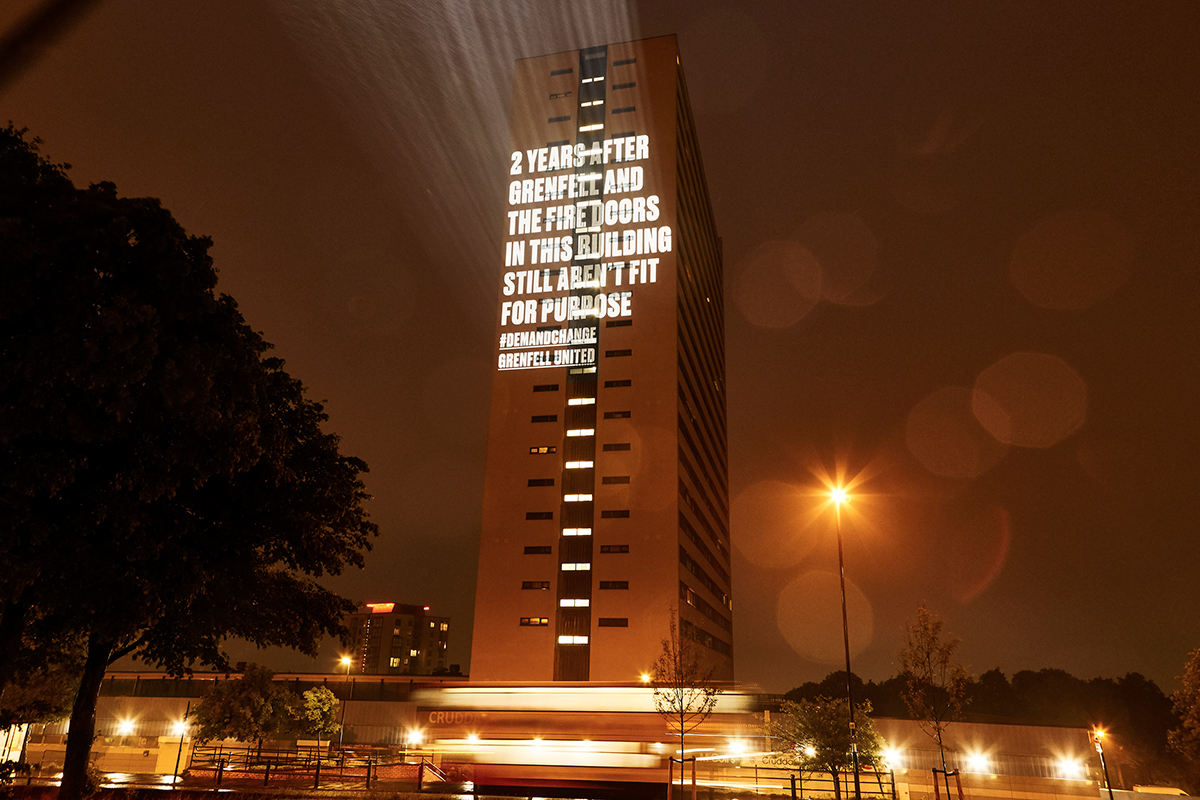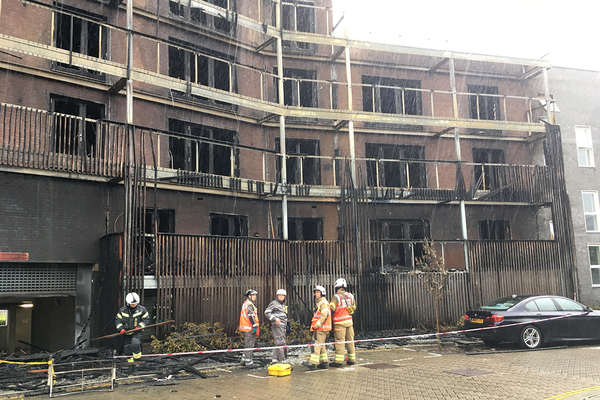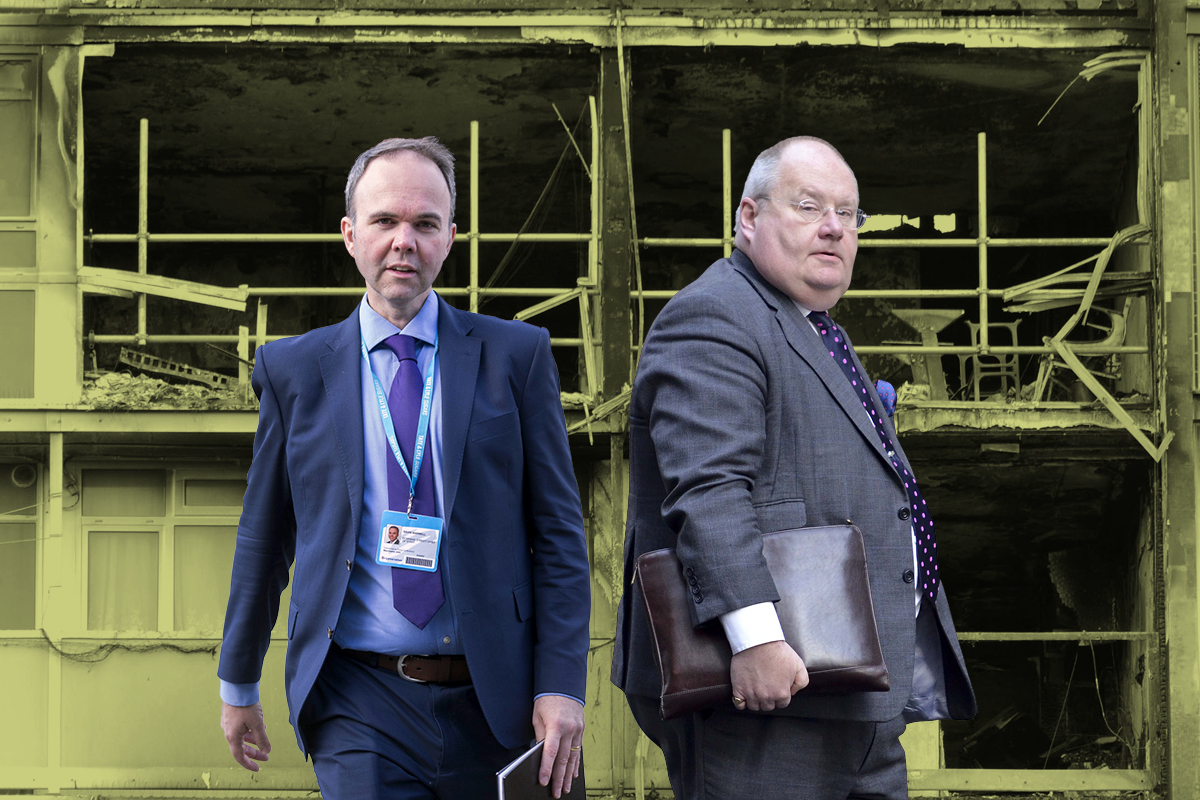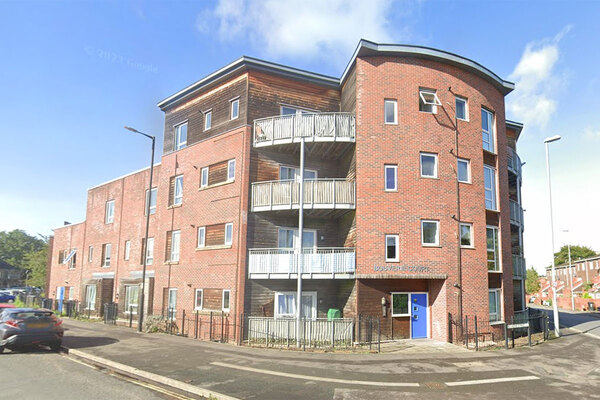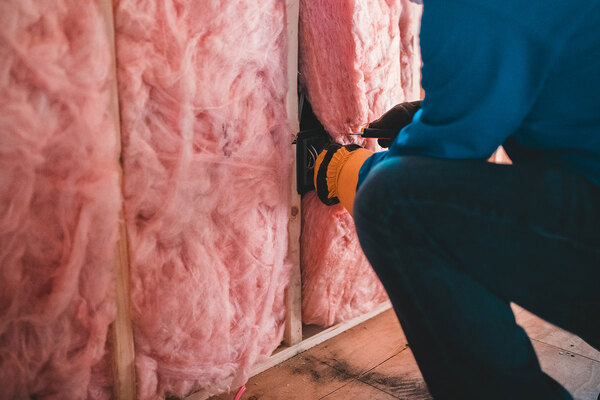Investigation: why have so few fire doors been replaced since Grenfell?
How much progress has been made on rectifying issues with fire doors in council homes? Nathaniel Barker finds out. Picture by Grenfell United
Since the Grenfell Tower disaster, cladding has dominated the debate on fire safety. However, while the aftermath of the tragedy has shone a light on the wide use of dangerous cladding materials across the country, what it has revealed about fire doors is equally concerning.
In March 2018, the Metropolitan Police revealed that it had tested an undamaged flat entrance fire door taken from the tower. It withstood fire and smoke for just 15 minutes, despite being designed to offer 30 minutes’ protection in line with building requirements.
Further failures in tests on a wider range of products commissioned by the government were described by communities secretary James Brokenshire as evidence of “a broader issue across the fire door market”. A five-month moratorium on the sale of glass reinforced plastic (GRP) composite fire doors was quietly agreed. GRP doors are particularly popular with social landlords largely for being relatively cheap to produce.
Snapshot data from government tests published in February showed that only three of 12 GRP door models tested met the 30-minute requirement, while two failed after less than 10 minutes. The government is still working with National Trading Standards and the Association of Composite Door Manufacturers to develop a remediation action plan.
Inside Housing has carried out the most comprehensive research to date about the scale of fire door issues in England’s council housing stock and reveals the glacial pace at which these issues are being fixed.
The picture is as frustrating as it is worrying. Through the Freedom of Information Act, we obtained data on 326,863 fire doors in blocks of flats owned by 98 councils – which together own well over half of the nation’s local authority housing stock.
A handful of councils that responded did not know how many doors are installed across their stock, and these have not been included.
Of all the doors counted, the councils believe that 33,522 (10.3%) are unlikely to satisfy the 30-minute standard, while several are still carrying out surveys to determine whether any of their doors are a concern.
Lord Gary Porter, chair of the Local Government Association, says that councils “have been failed” by the GRP door and testing industries.
Among the 44 councils that have identified non-compliant or potentially non-compliant doors since March 2018, half are yet to replace a single door. That includes Kensington and Chelsea Council – the owner of Grenfell Tower – which suspects that 931 of its 5,345 flat entrance fire doors are not fit for purpose. A spokesperson for the council said that a replacement programme is due to start in July, and that new doors are currently being installed in buildings “of specific concern”.
Overall, the councils were able to confirm that just 2,689 problem doors have been replaced – 8% of those deemed unlikely to meet safety standards. Some said that replacements are ongoing but they were unable to provide figures.
The data points to widespread and multifaceted confusion regarding fire doors that helps to explain why, two years on from Grenfell, remediation has been so slow.
Much of this confusion arose in July 2018, when the Ministry of Housing, Communities and Local Government (MHCLG) issued Advice Note 16, to help landlords replace fire doors. This document stated that replacement fire doors needed test evidence that the product could resist fire and smoke adequately from both sides.
The advice neglected, however, to specify that the ‘both-sides standard’ applied only to composite doors and not traditional fire doors, which are usually made of timber or steel. This point was clarified a month later by the government in Advice Note 17, but Inside Housing heard that in the interim some landlords needlessly cancelled orders for fire doors, sent back deliveries or refused payments after finding that they had not been tested from both sides.
Kevin Underwood, technical director at the British Woodworking Federation (BWF), says misunderstandings about what constitutes a safe fire door endure. “The BWF was concerned that the confusion around the testing and certification of different types of fire doors was creating greater fire safety risk than if the announcement had not been made, and the confusion is still there.”
Flat entrance fire doors in council housing stock
| Local authority | Total number of doors | Faulty doors | Number replaced | Costs identified (£) | Notes |
|---|---|---|---|---|---|
| Adur | 1,500 | 300 | 181 | 165000 | |
| Babergh | 500 | 0 | 0 | 0 | |
| Barnet | 4,900 | 4,900 | 0 | 0 | |
| Blackpool | 858 | 46 | 46 | 46552 | |
| Bournemouth | 2,800 | 0 | 0 | 0 | |
| Brighton & Hove | 6,989 | 2,254 | 0 | 0 | |
| Bristol | 5,550 | 320 | 310 | 300000 | |
| Cheltenham | 2,368 | 644 | 162 | ||
| Cheshire West & Chester | 1,850 | 0 | 0 | 0 | |
| City of London | 2,703 | Still surveying/testing | |||
| Colchester | 3,139 | 2,960 | 179 | 180000 | |
| Corby | 238 | Still surveying/testing | |||
| Cornwall | 1,168 | 0 | 0 | 0 | |
| Croydon | 9,822 | 1,523 | 0 | 0 | |
| Dudley | 6,052 | 4 | 0 | 0 | |
| East Kent Housing (Canterbury, Dover, Folkestone & Hythe, Thanet) | 6,563 | 0 | 0 | 0 | |
| East Riding of Yorkshire | 3,937 | 18 | 15 | 15800 | |
| East Suffolk | 135 | 0 | 0 | 0 | |
| Eastbourne | 3,000 | 0 | 0 | 0 | |
| Epping Forest | 2,086 | 0 | 0 | 0 | |
| Fareham | 1,003 | Still surveying/testing | |||
| Gateshead | 1,968 | 0 | 0 | 0 | |
| Gravesham | 2,021 | 0 | 0 | 0 | |
| Greenwich | 8,814 | 298 | 0 | Currently procuring contract | |
| Guildford | 1,312 | 0 | 0 | 0 | |
| Hammersmith & Fulham | 7,503 | 232 | 0 | 0 | |
| Haringey | 5,196 | 238 | 428000 | Ongoing replacement | |
| Harrogate | 350 | Unknown number of faulty doors | |||
| Harrow | 3,653 | 35 | 0 | 40000 | |
| Havering | 7,039 | 0 | 0 | 0 | |
| Hinckley & Bosworth | 282 | 13 | 0 | 12000 | |
| Hounslow | 11,298 | 0 | 0 | 0 | |
| Ipswich | 1,780 | 0 | 0 | 0 | |
| Islington | 9,335 | 2,448 | 0 | 0 | |
| Kensington & Chelsea | 5,345 | 931 | 0 | 1490000 | |
| Kettering | 498 | 498 | 0 | 0 | |
| Kingston upon Hull | 3,985 | 1,725 | 1380000 | Ad hoc replacement | |
| Kingston upon Thames | 2,164 | 205 | 0 | 220000 | |
| Kirklees | 5,000 | 500 | 109 | 125000 | |
| Lambeth | 25,400 | 1,483 | 450 | 900000 | |
| Lancaster | 850 | 85 | 0 | 0 | |
| Leeds | 9,577 | 0 | 0 | 0 | |
| Lewes | 1,109 | 329 | 60 | Part of £1,020,503 programme | |
| Lewisham | 1,276 | 0 | 0 | 0 | |
| Medway | 1,200 | 38 | 0 | 0 | |
| Melton | 714 | 0 | 0 | 0 | |
| Mid Devon | 455 | 0 | 0 | 0 | |
| Mid Suffolk | 327 | 0 | 0 | 0 | |
| Milton Keynes | 7,000 | Still surveying/testing | |||
| New Forest | 1,400 | 0 | 0 | 0 | |
| Newark & Sherwood | 1,415 | 0 | 0 | 0 | |
| Newcastle upon Tyne | 8,166 | 962 | 1443000 | Ongoing replacement | |
| North Kesteven | 311 | 22 | 22 | 38429 | |
| North Tyneside | 1,320 | 0 | 0 | 0 | |
| North West Leicestershire | 420 | 0 | 0 | 0 | |
| Northumberland | 750 | 0 | 0 | 0 | |
| Norwich | 10,344 | 35 | 0 | 0 | |
| Nottingham | 8,364 | 0 | 0 | 0 | |
| Nuneaton & Bedworth | 1,308 | 0 | 0 | 0 | |
| Oldham | 857 | 0 | 0 | 0 | |
| Oxford | 3,484 | 28 | 29400 | Ongoing replacement | |
| Poole | 1,856 | 882 | 2 | 2907 | |
| Portsmouth | 7,005 | 2,077 | 102 | No figure provided - contractor liable | |
| Reading | 3,455 | 7 | 7 | 4375 | |
| Redbridge | 3,116 | 2,766 | 350 | 9348000 | |
| Richmondshire | 267 | 0 | 0 | 0 | |
| Rotherham | 1,912 | Still surveying/testing | |||
| Sandwell | 5,962 | 0 | 0 | 0 | |
| Sedgemoor | 1,369 | 0 | 0 | 0 | |
| Sheffield | 18,630 | 118 | 0 | 0 | |
| Shropshire | 250 | 0 | 0 | 0 | |
| Slough | 3,800 | 0 | 0 | 0 | |
| South Cambridgeshire | 360 | 39 | 39 | 51490 | |
| South Derbyshire | 390 | 94 | 0 | 0 | |
| South Holland | 98 | 60 | 0 | 0 | |
| South Kesteven | 782 | 0 | 0 | 0 | |
| South Tyneside | 1,957 | 0 | 0 | 0 | |
| Southampton | 13,000 | 574 | 524 | 856000 | |
| St Albans | 3,811 | 0 | 0 | 0 | |
| Stoke-on-Trent | 1,393 | 0 | 0 | 0 | |
| Stroud | 846 | 0 | 0 | 0 | |
| Sutton | 3,476 | 2,097 | 0 | 3500000 | |
| Tamworth | 1,471 | 0 | 0 | 0 | |
| Tandridge | 193 | 53 | 0 | 0 | |
| Tendring | 1,100 | 0 | 0 | 0 | |
| Warwick | 2,100 | 0 | 397 | 0 | Doors replaced as part of high rise refurbishment |
| Waverley | 636 | 12 | 0 | 12000 | |
| Wealden | 899 | 0 | 0 | 0 | |
| Welwyn Hatfield | 700 | Still surveying/testing | |||
| Wigan | 2,603 | 0 | 0 | 0 | |
| Wiltshire | 1,029 | 0 | 0 | 0 | |
| Winchester | 1,323 | 54 | 0 | 40000 | |
| Woking | 400 | 0 | 0 | 0 | |
| Wolverhampton | 7,123 | 1,609 | 125 | 1700000 | |
| York | 2,800 | 6 | 6 | 4200 |
Source: Data obtained from councils under the Freedom of Information Act
For instance, Portsmouth and Sutton councils have erred on the side of caution and interpreted all their GRP fire doors as faulty. The latter has committed to replace all these doors, having just begun a programme to replace 1,878 doors in 2019/20, costing an estimated £3.5m. Its ALMO, Sutton Housing Partnership, says the move “is part of our commitment to improving safety beyond the legally required minimum”. On the other hand, Norwich Council is using GRP products as replacements.
Mr Underwood explains that there are at least two different types of GRP doors – foam-filled and those with a laminated timber core – that are likely to perform differently in a test. However, both he and fire door consultant Neil Ashdown say that not enough information has been released about the MHCLG tests. That means it is difficult to know why doors fail – and therefore understand exactly what makes a door more or less likely to comply with standards.
“The problem is they didn’t say why the doors had failed,” says Mr Ashdown. “It could be that some configurations – types of glazing systems for example – are more susceptible to issues.” Meanwhile, government tests of timber doorsets are ongoing, but no fails have yet been recorded.
Mr Underwood is particularly concerned that the mistakes that led to inadequate fire doors being installed at Grenfell and elsewhere persist.
He is adamant that test data should not be taken as proof of a door’s compliance. A test report, he says, “is just a signpost in time” and could be years out of date, with the actual product made to a different specification with different materials.
“We still have building control asking for test reports in preference to third-party certification documents. It means there is still confusion out there,” he says.
“Certification is seen as the blue riband,” explains Mr Ashdown. “There is definitely a move towards that but I suspect it’s unlikely to become a mandatory requirement.”
Government advice on fire doors states that certification “will provide additional assurance of performance” but still accepts “carefully checked” test evidence.
In numbers
98
Councils included in survey, owning well over half of the country’s local authority housing stock
326,863
Number of fire doors on which we obtained data
33,522
Fire doors suspected not to meet 30-minute safety standard (10.3%)
2,689
Number of problem doors replaced so far (8%)
£22.3m
Total bill identified by councils so far
All this confusion means that, according to Lord Porter, even though the moratorium was lifted in December, “councils are struggling to confirm that the fire doors that have come back onto the market meet their requirements”.
Fire doors are one of the most fundamental elements of building safety, often key to preventing compartmentation from being breached. However, it appears that social landlords, the industry, building inspectors and the government are all unable to definitively describe what constitutes a compliant fire door.
The MHCLG says its line is unambiguous: “Building owners should ensure that products being used in their buildings meet the appropriate standards. Where doors that have failed tests are installed, we have been clear that building owners must take responsibility and should review their building fire risk assessments.”
This position relinquishes the onus of recommending which doors are safe, instead implying that if you do not think your fire doors are up to scratch, you should make sure other fire safety measures pick up the slack to mitigate the risk.
Lord Porter, chair of the LGA, says "councils have been failed"
But councils are not satisfied with this approach. Diarmaid Ward, executive member for housing and development at Islington Council, says the authority is still awaiting results from ongoing official tests of timber doors “in the absence of clear government guidance”. Similarly, Kettering Council says it is only able to replace doors ad hoc “after a detailed assessment and consultation with our framework partners” due to the lack of “definitive guidance”.
Brighton & Hove City Council is waiting to replace 2,254 doors, and says it is “pressing MHCLG for information on the type of doors we should use”.
Once landlords do know which doors to use, there is the question of money. The councils needing to replace doors in our survey have already identified a combined £22.3m bill. This will certainly rise as more replacement programmes are put in place, with many councils yet to calculate costs. Relatively conservative estimates put the rate at around £1,000 per door.
“Funding is clearly a massive challenge,” says Darren Rodwell, executive member for housing and planning at London Councils. “It’s unfair to expect local authorities to pick up the bill for manufacturers’ safety failings and for shortcomings in government regulation.”
If – as all parties ostensibly agree – residents’ safety is of paramount importance, it is vital that the hand-wringing and finger-pointing over costs that have played out so tortuously with the cladding scandal are not repeated.
Never Again campaign
In the days following the Grenfell Tower fire on 14 June 2017, Inside Housing launched the Never Again campaign to call for immediate action to implement the learning from the Lakanal House fire, and a commitment to act – without delay – on learning from the Grenfell Tower tragedy as it becomes available.
One year on, we have extended the campaign asks in the light of information that has emerged since.
Here are our updated asks:
GOVERNMENT
- Act on the recommendations from Dame Judith Hackitt’s review of building regulations to tower blocks of 18m and higher. Commit to producing a timetable for implementation by autumn 2018, setting out how recommendations that don’t require legislative change can be taken forward without delay
- Follow through on commitments to fully ban combustible materials on high-rise buildings
- Unequivocally ban desktop studies
- Review recommendations and advice given to ministers after the Lakanal House fire and implement necessary changes
- Publish details of all tower blocks with dangerous cladding, insulation and/or external panels and commit to a timeline for remedial works. Provide necessary guidance to landlords to ensure that removal work can begin on all affected private and social residential blocks by the end of 2018. Complete quarterly follow-up checks to ensure that remedial work is completed to the required standard. Checks should not cease until all work is completed.
- Stand by the prime minister’s commitment to fully fund the removal of dangerous cladding
- Fund the retrofitting of sprinkler systems in all tower blocks across the UK (except where there are specific structural reasons not to do so)
- Explore options for requiring remedial works on affected private sector residential tower blocks
LOCAL GOVERNMENT
- Take immediate action to identify privately owned residential tower blocks so that cladding and external panels can be checked
LANDLORDS
- Publish details of the combinations of insulations and cladding materials for all high rise blocks
- Commit to ensuring that removal work begins on all blocks with dangerous materials by the end of 2018 upon receipt of guidance from government
- Publish current fire risk assessments for all high rise blocks (the Information Commissioner has required councils to publish and recommended that housing associations should do the same). Work with peers to share learning from assessments and improve and clarify the risk assessment model.
- Commit to renewing assessments annually and after major repair or cladding work is carried out. Ensure assessments consider the external features of blocks. Always use an appropriate, qualified expert to conduct assessments.
- Review and update evacuation policies and ‘stay put’ advice in the light of risk assessments, and communicate clearly to residents
- Adopt Dame Judith Hackitt’s recommended approach for listening to and addressing tenants’ concerns, with immediate effect
CURRENT SIGNATORIES:
- Chartered Institute of Housing
- G15
- National Federation of ALMOs
- National Housing Federation
- Placeshapers
